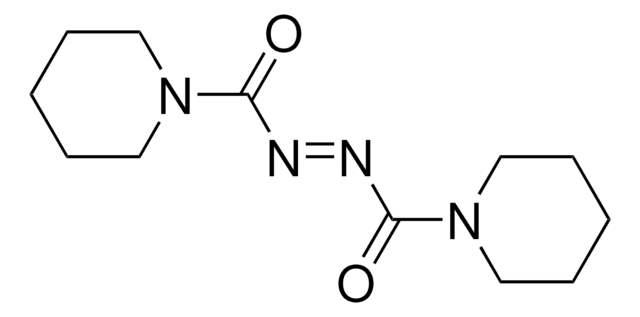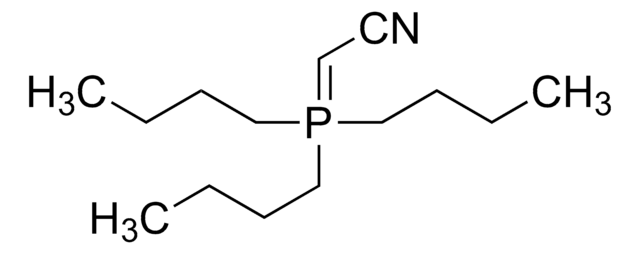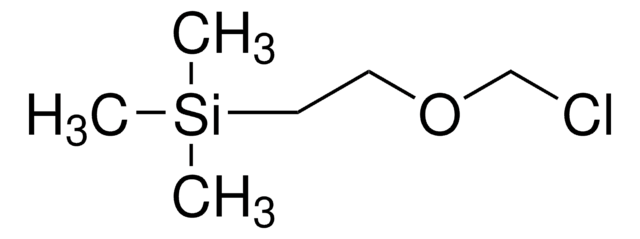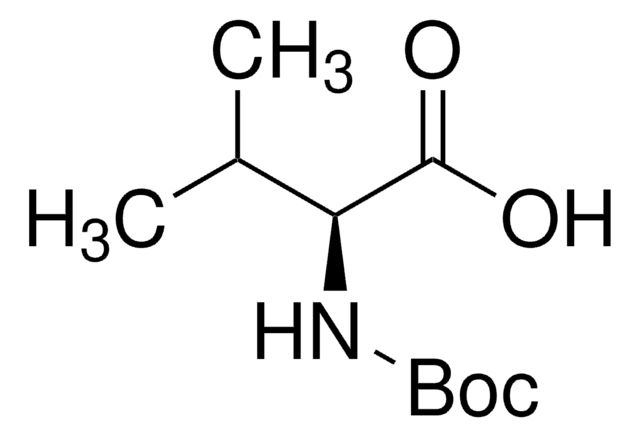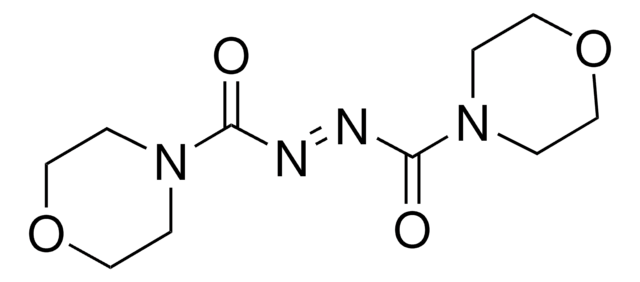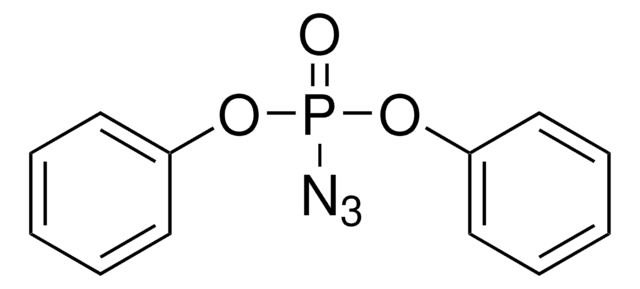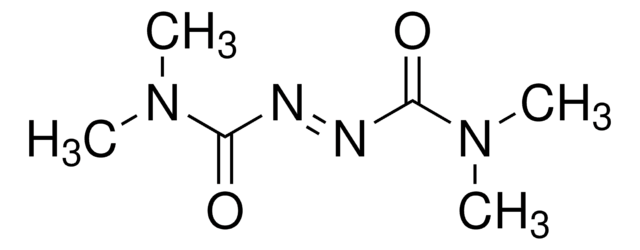Alle Fotos(2)
Wichtige Dokumente
680850
Di-(4-chlorbenzyl)azodicarboxylat
97%
Synonym(e):
Bis-(4-chlorbenzyl)-azodicarbonsäure, DCAD
Anmeldenzur Ansicht organisationsspezifischer und vertraglich vereinbarter Preise
Alle Fotos(2)
About This Item
Empirische Formel (Hill-System):
C16H12Cl2N2O4
CAS-Nummer:
Molekulargewicht:
367.18
MDL-Nummer:
UNSPSC-Code:
12352101
PubChem Substanz-ID:
NACRES:
NA.22
Empfohlene Produkte
Assay
97%
Form
solid
mp (Schmelzpunkt)
108-112 °C
Funktionelle Gruppe
azo
chloro
SMILES String
O=C(/N=N\C(OCC1=CC=C(Cl)C=C1)=O)OCC2=CC=C(Cl)C=C2
InChI
1S/C16H12Cl2N2O4/c17-13-5-1-11(2-6-13)9-23-15(21)19-20-16(22)24-10-12-3-7-14(18)8-4-12/h1-8H,9-10H2/b20-19-
InChIKey
UIFGGABIJBWRMG-VXPUYCOJSA-N
Allgemeine Beschreibung
Learn More at the Professor and Product Portal of Professor Bruce Lipshutz.
Anwendung
Reactant for preparation of:
- Amino thioesters via guanidine-catalyzed biomimetic enantioselective decarboxylative Mannich and amination reactions of malonic acid half thioesters
- Hydroacylation reaction of aldehydes in Ionic liquid (IL) medium
- DCAD (di-p-chlorobenzyl azodicarboxylate) for Mitsunobu coupling reactions
Di-(4-chlorobenzyl)azodicarboxylate (DCAD) is a novel, stable, solid alternative to DEAD and DIAD for a variety of Mitsunobu couplings giving a readily separable hydrazine byproduct that can be recycled.
Hier finden Sie alle aktuellen Versionen:
Besitzen Sie dieses Produkt bereits?
In der Dokumentenbibliothek finden Sie die Dokumentation zu den Produkten, die Sie kürzlich erworben haben.
Kunden haben sich ebenfalls angesehen
T Amirabadi Farahani et al.
Journal of dairy science, 100(8), 6199-6217 (2017-05-30)
This experiment was conducted to compare conventional (CON; 21 d) and shortened (SH; 10 d) close-up period, and evaluate the effect of shortened close-up period combined with feeding different metabolizable protein (MP) levels on dry matter (DM) intake, metabolic status
R Zimpel et al.
Journal of dairy science, 101(9), 8461-8475 (2018-07-05)
The objective was to determine if the reduction in dry matter (DM) intake of acidogenic diets is mediated by inclusion of acidogenic products, content of salts containing Cl, or changes in acid-base status. The hypothesis was that a decrease in
J E P Santos et al.
Journal of dairy science, 102(3), 2134-2154 (2019-01-08)
The objectives were to use meta-analytic methods to determine the effects of changes in dietary cation-anion difference (DCAD) prepartum on productive performance and health of dairy cows. The literature was systematically reviewed, searching randomized experiments with transition cows that manipulated
Bruce H Lipshutz et al.
Organic letters, 8(22), 5069-5072 (2006-10-20)
Di-p-chlorobenzyl azodicarboxylate (DCAD) is introduced as a novel, stable, solid alternative to DEAD and DIAD for a variety of Mitsunobu couplings. DCAD/Ph(3)P-mediated reactions in CH(2)Cl(2) generate a readily separable hydrazine byproduct. [reaction: see text]
Vivian F Su et al.
BMC developmental biology, 7, 43-43 (2007-05-09)
The Hedgehog (Hh) family of secreted growth factors are morphogens that act in development to direct growth and patterning. Mutations in human Hh and other Hh pathway components have been linked to human diseases. Analysis of Hh distribution during development
Unser Team von Wissenschaftlern verfügt über Erfahrung in allen Forschungsbereichen einschließlich Life Science, Materialwissenschaften, chemischer Synthese, Chromatographie, Analytik und vielen mehr..
Setzen Sie sich mit dem technischen Dienst in Verbindung.

